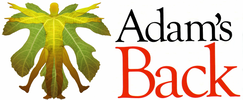|
10/7/2024 0 Comments Easy sweet potatohash brownsServe these crispy sweet potato hash browns as a delicious and healthy snack or meal for any time of the day.Ingredients
Serving suggestions: Top with baby spinach leaves, poached eggs and garnish of choice. Serve with a fresh baby spinach, tomato and feta salad, or chopped avocado and yoghurt dip.
0 Comments
Strong glutes are essential for more than just gym buffs. Discover more about these muscles, and how they support overall joint function and mobility.What are your glutes?
This nickname refers to the gluteus minimus, medius, and maximus muscles, often called the bottom muscles. The gluteus maximus is the largest of the three and the strongest muscle in your body. It stabilises your hip and extends and rotates it when needed, and supports the correct position of your leg. Together, these muscles help keep you upright by fighting gravity, enabling correct leg movement, and stabilising your pelvis and body. Strong glutes are crucial for functional movements like squatting and bending, everyday activities like walking, and sports like cycling. They also support the proper functioning of other joints. Why are glutes important for joint health? Joints need to move freely to avoid stiffness or injury, relying on muscles for stability and proper function. Inadequate glute strength may result in a range of issues, potentially leading to discomfort and pain. These include:
Strengthening the glutes can help address these issues by providing support and stability in the hips, pelvis, and lower back. Before trying these exercises, ask us if they’re suitable for you and how to perform them safely. We’re here to help! Do you have tight calf muscles? When they're tense, you might feel cramping, pulling, or tightness. Though discomfort is common, tight calves usually aren't painful. However, they can still hinder foot, leg, and overall body function.The calf muscles connect the thigh bone to the heel and aid leg movement. When they contract, they bend the knee and point the toes downward. Tight calf muscles restrict these movements, making it harder to lift the toes and straighten the leg.
Many factors - not all well-known - can cause tight calves. Issues like reduced blood flow, nerve problems, overexertion, dehydration, poor physical condition, and flat feet may increase the risk. Nutrient deficiencies such as low magnesium, potassium, or calcium levels, along with biomechanical issues like an irregular gait, can also contribute to tight calf muscles. Tight calves affect more than just your calves. They limit ankle mobility crucial for activities like walking, increasing the risk of foot, heel, and ankle issues. Additionally, tight calves impair weight distribution while walking; affecting balance and gait, even without pain. The good news is that there are ways to treat tight calves. A five-minute massage to each calf muscle can improve flexibility. You can knead the muscles with your hands or roll your calves back and forward over a foam roller. Stretching your calves provides numerous benefits, such as improved flexibility, balance and stability, better ankle mobility, stronger lower legs, and reduced risk of injury. Ensure you warm-up beforehand; and get professional advice to determine the most suitable stretches for your needs and how to execute them safely. Remember, overstretching or using improper technique can increase the risk of injury. If you're struggling with tight calves, we can investigate the causes and offer personalised guidance to help alleviate tightness and keep you safe from injury. Your wrist is a complex joint composed of many bones, cartilage, and ligaments, which together enable a wide range of movement. Try rotating your hands to see how flexible your wrists are!Wrist structure
The wrist's structure allows flexibility for daily tasks while protecting vital nerves, blood vessels, and muscles. This protection is provided by bones and ligaments forming a secure framework. The wrist has eight carpal bones in two rows: one near the forearm and one near the hand. Ligaments connect most of the wrist bones, providing flexibility, strength, and stability. Cartilage absorbs shock and reduces friction during movement. Muscles that move the wrist start in the forearm and attach to the hand and fingers. A broad ligament secures the tendons of these muscles, maintaining alignment during wrist movements. Why wrist injuries can occur Despite your wrist's clever structure, it's still vulnerable to various injuries. Trauma, lifestyle, and underlying medical issues can all contribute to wrist problems.
Carpal tunnel syndrome, for example, is a common wrist condition with several contributing factors. Inflammation causes swelling in the wrist and compresses the median nerve, leading to pain, numbness, and tingling in the fingers. This condition is often worsened by repetitive hand movements such as typing. Maintaining good wrist health involves adopting healthy lifestyle habits, using proper ergonomics, and adjusting how you perform activities. If you need advice on preventing or treating wrist problems, feel free to ask us. Winter in Australia often brings chilly winds and illnesses such as colds and flu. However, we’re fortunate to have an abundance of incredible fruits and vegetables that can boost our immune systems and help combat infections. Let's meet five of these winter superstars!Citrus fruits: such as oranges, mandarins, lemons, and grapefruit are high in vitamin C, which offers numerous health benefits. Vitamin C acts as an antioxidant, which helps protect your body against damage. It also aids the function of various white blood cells, which are an important part of your body’s immune system response. Consume foods high in vitamin C daily, as it doesn’t stay in your body for long.
Sweet potatoes: These hearty root vegetables are not only delicious but also packed with nutrients. They’re a great source of beta-carotene, which your body converts into vitamin A, crucial for supporting immune function. Sweet potatoes also provide vitamin C, fibre, and antioxidants. Broccoli: This nutritious vegetable contains significant amounts of vitamins A, C and E as well as dietary fibre. Vitamins E and C are effective antioxidants which can aid in protecting your body against bacteria, viruses, and other germs. Spinach: This leafy green is a nutritional powerhouse, packed with vitamins A, C, and E, as well as beta-carotene and antioxidants and folate. These nutrients work together to strengthen your immune system, fortify your body's defences, and promote overall health. Garlic: Not only does garlic add an aromatic touch to your cooking, but it also serves as a potent immune booster. Packed with sulphur-containing compounds, garlic possesses antimicrobial properties that can help fend off infections. It may even contribute to reducing the severity and duration of colds. So, feel free to include garlic in your recipes – your immune system will appreciate it. These are just five examples of the wide array of fruits and vegetables that provide essential vitamins, minerals, and antioxidants to strengthen your immune system and fight infections. Eating a colourful variety of nutritious fruit and vegetables daily is not only tasty, but also an effective way to support your health. Your spine is an extraordinary feat of biological engineering, designed to move, support, protect, weight-bear, absorb shock, and more. Understanding this intricate marvel helps you know your body better.Spinal regions
The spine has five regions: cervical, thoracic, lumbar, sacral, and coccyx.
Each spine bone is called a vertebra, and the vertebrae in each region are given a number. For example, most people have five bones in the lumbar region named L1, L2, L3, L4, and L5. L1 is the uppermost lumbar vertebra, and L5 is the lowermost vertebra. This numbering is for identification purposes, used to identify and record “problem” spots accurately. Vertebral shapes Each vertebra in the spine has a distinct shape that corresponds to its specific function. For example, the first cervical vertebra (C1) is ring-like with a hole in the centre. In contrast, the tailbone is triangular. These structural differences enable your spine to support a range of movements and functions. The cervical, thoracic, and lumbar vertebrae have a thick, solid section at the front called the vertebral body, which supports most of your body's weight. Two bony "arms" extend from the vertebral body and connect at the back, forming a space for the spinal cord. Small holes on the sides of the vertebrae allow nerves to exit from the spinal cord, enabling communication between it and the rest of your body. Spinal discs The cervical, thoracic, and lumbar bones have an intervertebral disc (IVD) between them, with the exception of C1 and C2. The IVD is a rubbery cushion with a softer inner and tough outer section. The disc connects vertebrae, allows safe movement, absorbs shock, and helps your spine to work well. Additionally, some people have discs between the sacral and coccygeal bones. Long and short ligaments connect the vertebrae, while long and short muscles, which are primarily responsible for the movement of the spine, allow for bending, twisting, and other movements. Spinal injury and care Some spinal areas are more difficult to damage and treat due to anatomical differences and location. For instance, the thoracic region is less prone to injury compared to the lumbar region because the ribcage provides stability and protection. Conversely, treating the coccyx can be more complex because it’s very small and situated in a difficult-to-access area. Please feel free to reach out for more information - spine health is our passion! Hairdressing can be high risk when it comes to injury. We care for many in this profession and understand that the physical toll can be significant.Standing and working with tense shoulders and raised arms for long periods can be exhausting. The awkward postures and the mechanical stress placed on your joints can be troublesome. Your muscles must stay “switched on” for long periods. Like a car that runs out of petrol, your muscles run out of energy.
Additionally, repetitive hand motions and limited breaks can be really hard on the body. Hairdressers often experience neck, shoulder, wrist, hand, and back pain. Fortunately there are ways to reduce your risk, help improve your posture and ease discomfort. Here are five suggestions:
Protein plays an important role in joint health by providing the foundation for cartilage, tendons, ligaments, and other connective tissues in your body.Your body breaks down protein from food into amino acids, which are then used to build and repair tissues throughout your body, including those in your joints.
Certain amino acids, such as glycine and proline, are especially important for joint health. They are necessary for the production of collagen, which helps to provide strength, flexibility, and elasticity in cartilage, tendons, and ligaments. Collagen also acts as a cushion between your bones to prevent them from rubbing against each other during movement. A diet that’s rich in high-quality protein helps to promote joint health by providing the necessary amino acids your body needs to produce and repair cartilage, tendons, and other connective tissues. A lack of protein in your diet can lead to weakened joints and increased susceptibility to joint pain and injury. On the other hand, consuming too much of certain types of proteins, such as those found in processed meat and red meat, can also contribute to joint pain and inflammation. These proteins can cause the body to produce more uric acid, which can lead to gout, a painful form of arthritis that commonly affects the joints in the toes, feet, and ankles. In addition, some people may have an intolerance or allergy to certain types of protein, such as gluten or casein (a protein found in dairy products), which can cause inflammation and joint pain as a result of an autoimmune response. It’s important to maintain a balanced diet that includes a variety of healthy protein sources, such as lean meats, fish and seafood, eggs, legumes, tofu, nuts and seeds, while avoiding added sugar and processed and refined foods. The type of protein, and how much of it you eat, is important. By eating the right foods, you'll not only improve your mobility and reduce the risk of joint pain, stiffness, and injuries, but also enhance your overall wellbeing and quality of life. Chiropractors can play a role in enhancing athletic performance and preventing injuries for athletes. Australian chiropractors commonly treat athletes, who consistently report high levels of trust and satisfaction in their care.Considering the physical demands athletes often face, encountering pain is to be expected. However, when pain arises, it can significantly impact both participation and performance. Additionally, untreated pain can become an ongoing problem. We understand these issues, and that resting is hard, especially with impending competitions. Thankfully, we can help to ease discomfort and pain.
Low back problems Athletes face a higher risk of low back pain due to heavy loads and years of sports activity. Additionally, prior episodes of low back pain increase the risk of it returning. Chiropractic care offers evidence-based support in reducing pain and improving function in chronic lower back pain. Beyond pain relief We also provide additional benefits beyond pain relief. A 2019 study published in the International Journal of Clinical Medicine Research revealed that chiropractic care can enhance performance, and improve injury and rehabilitation measures for athletes. That’s a powerful trio. Research published in BMC Musculoskeletal Disorders, investigated the impact of regular chiropractic care throughout an Aussie Rules season. The structured plan resulted in reductions to primary lower limb muscle strains. There were also less weeks missed due to non-contact knee injuries. From a chiropractic standpoint, adjusting our patients frequently results in enhanced range of motion and flexibility. Muscles relax and joints function better. For athletes, a body that moves well can perform well. Chiropractors have long supported athletes to help them perform better and recover faster. Our care is aimed at optimising your body's potential and overall well-being. These fritters are a delicious way to serve winter vegetables – great for a healthy snack!Ingredients
1 1⁄2 Tbsp olive oil 1 cup cauliflower, finely chopped 1 cup broccoli, finely chopped 3 small spring onions, finely chopped 1⁄2 cup self-raising flour 1 tsp ground coriander or paprika 1⁄2 teaspoon salt 3 large eggs, lightly beaten 1⁄2 cup milk 1⁄2 cup tasty cheese, grated 1 Tbsp chopped fresh parsley Instructions
Serving Serve sprinkled with any herbs of your choice (or simply use the tops of the spring onions). Add a dollop of chutney, yoghurt or sour cream just before eating. |
AuthorAdam's Back is a team of dedicated complimentary health professionals. Our aim is to support you in finding drug-free solutions for better health. Archives
July 2024
Categories |
Search by typing & pressing enter











 RSS Feed
RSS Feed